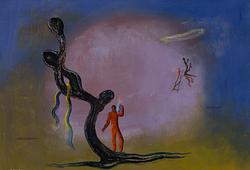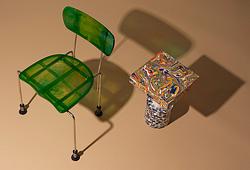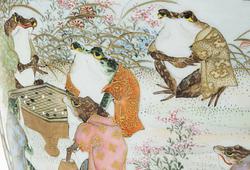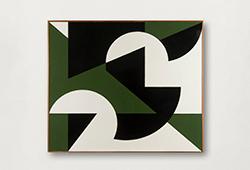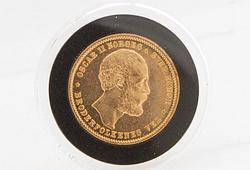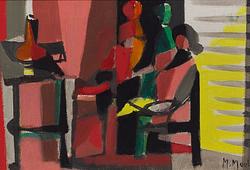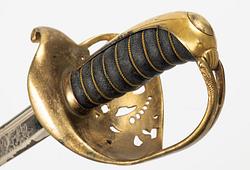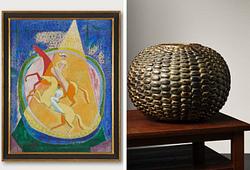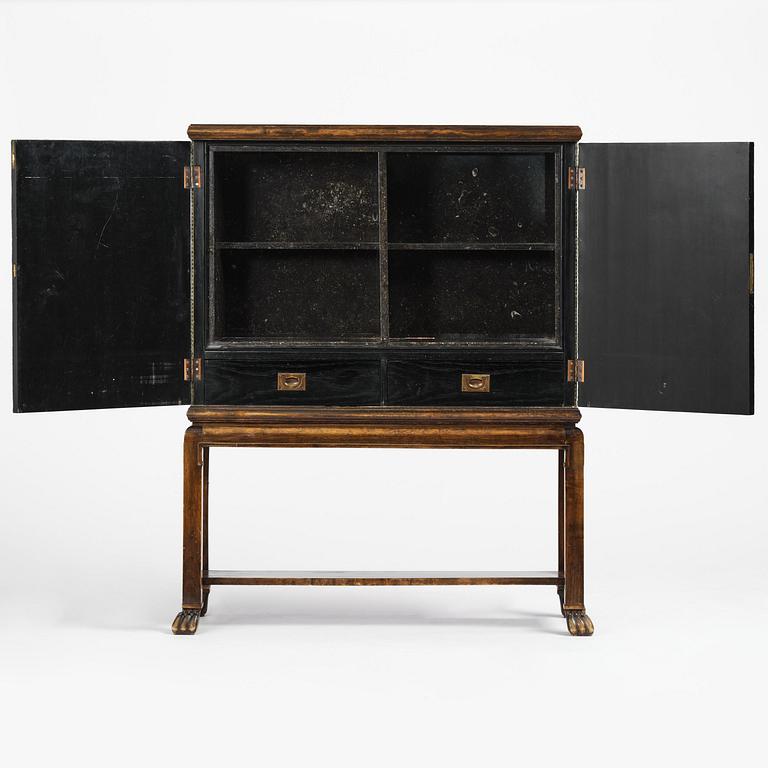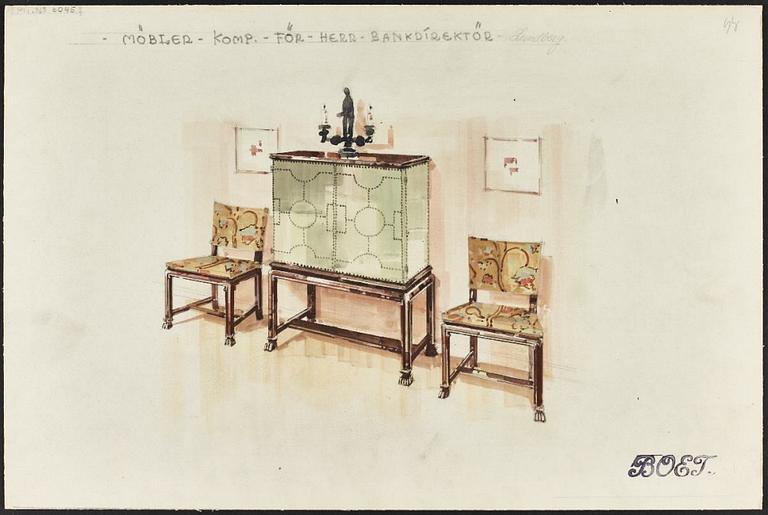Otto Schulz
a cabinet, Boet, Gothenburg, 1920s-30s.
Stained birch, legs with carved decoration and stylized lion's paw feet, front and sides upholstered in green velvet with geometric decoration of brass nail decoration, so-called "Bopoint", interior with black marble, two drawers below, manufacturer's stamp BOET and a note in pencil Göteborg. Length 99 cm, depth 35 cm, height 120 cm.
Wear, damages and repairs. Keys included.
Literature
Model illustrated in a watercolour titled "Möbler för Bankdirektör Lundberg, Göteborg" and the pattern for the front decoration is illustrated in a watercolour titled "Vardagsrum Herr Konsul Julius Hüttner, Göteborg", both in the Otto Schulz collection preserved at the Röhsska Museum in Gothenburg, inventory number RKM 37:944-1970 and RKM 37:16-1970 respectively.
Designer
Otto Schulz was a German-born designer and architect who spent the majority of his life working in Gothenburg, Sweden. In 1920, Schulz founded the company Boet together with Adolf Nordenberg, which became a highly influential interior and furniture manufacturer. Schulz's daring aesthetics have a multifaceted character that has contributed to important elements in both the Swedish Grace and Swedish Modern concepts. Schulz also published the magazine Boet, which, along with the store and business, helped to cement his role as central in interior design contexts. Some of Schulz's characteristics included developing techniques for which he took out patents, such as Bopoint, Bosaik, and Botarsia, all of which contributed to the furniture's distinctive aesthetics and quality.
Read more



